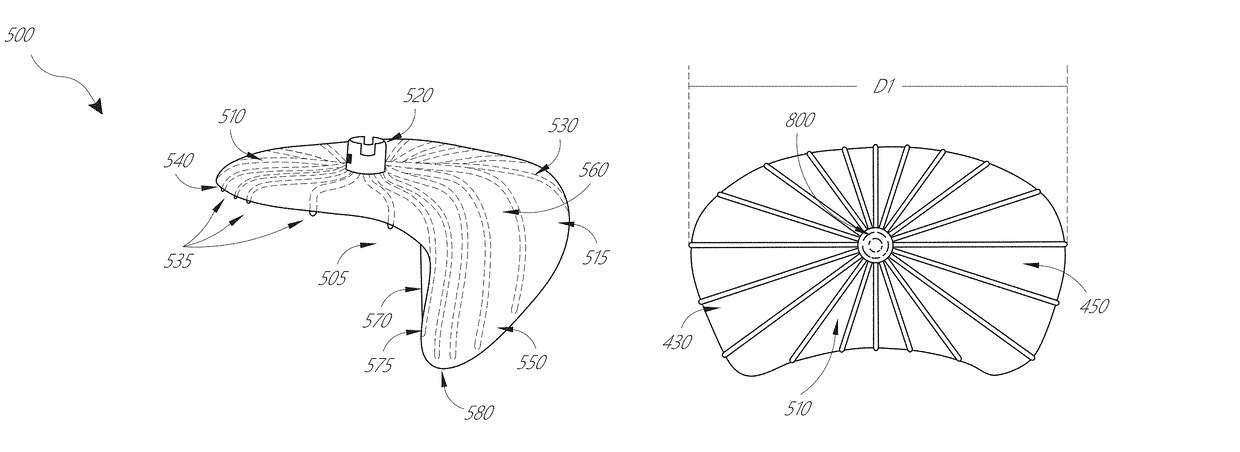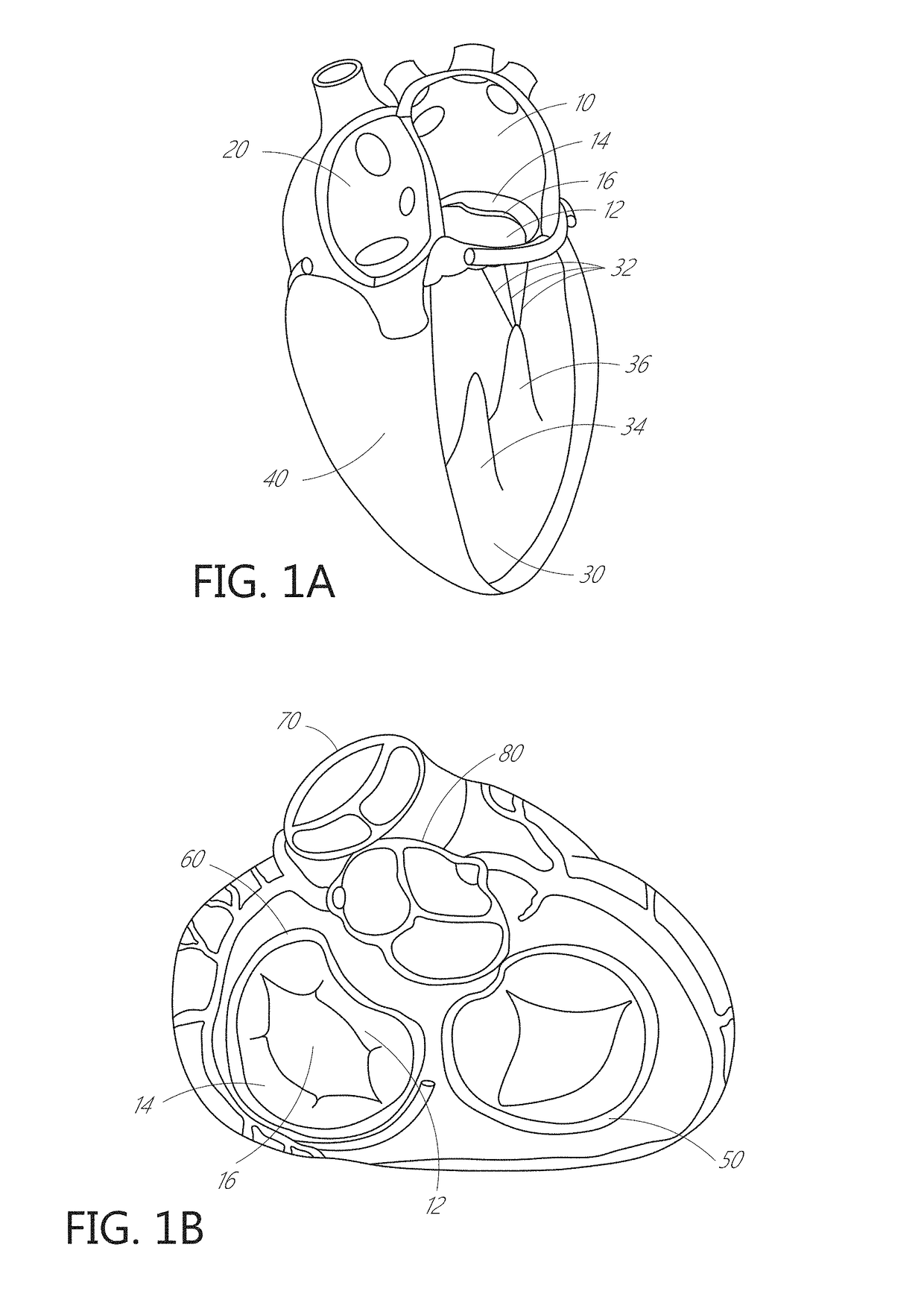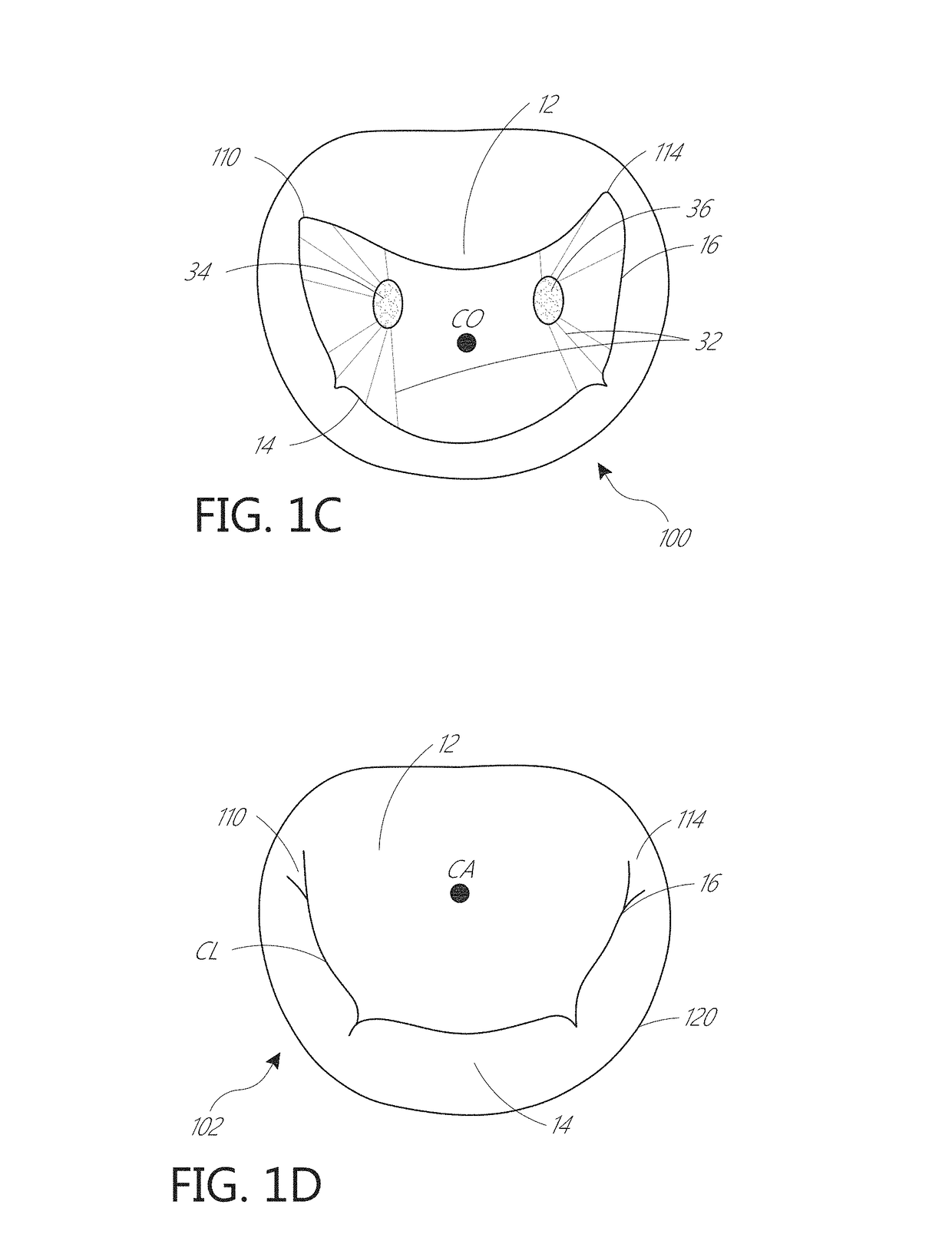Device, system, and method for transcatheter treatment of valvular regurgitation
a technology of valvular regurgitation and transcatheter, which is applied in the field of devices, systems and methods for transcatheter treatment of valvular regurgitation, can solve the problems of significant number of patients who may not take medications regularly, medication can suffer from lack of patient compliance, and pharmacological therapies of mitral valve regurgitation may be inconvenien
- Summary
- Abstract
- Description
- Claims
- Application Information
AI Technical Summary
Benefits of technology
Problems solved by technology
Method used
Image
Examples
Embodiment Construction
[0115]The present invention, in some embodiments, generally provides improved medical devices, systems, and methods, often for treatment of mitral valve regurgitation and other valve diseases including tricuspid regurgitation. While the description that follows includes reference to the anterior leaflet in a valve with two leaflets such as the mitral valve, it is understood that “anterior leaflet” could refer to one or more leaflets in valve with multiple leaflets. For example, the tricuspid valve has 3 leaflets so the “anterior” could refer to one or two of the medial, lateral, and posterior leaflets. The coaptation assistance elements described herein will generally include a coaptation assist body (sometimes referred to herein as a valve body) which is generally along the blood flow path as the leaflets of the valve move back and forth between an open-valve configuration (with the anterior leaflet separated from valve body) and a closed-valve configuration (with the anterior leaf...
PUM
 Login to View More
Login to View More Abstract
Description
Claims
Application Information
 Login to View More
Login to View More - R&D
- Intellectual Property
- Life Sciences
- Materials
- Tech Scout
- Unparalleled Data Quality
- Higher Quality Content
- 60% Fewer Hallucinations
Browse by: Latest US Patents, China's latest patents, Technical Efficacy Thesaurus, Application Domain, Technology Topic, Popular Technical Reports.
© 2025 PatSnap. All rights reserved.Legal|Privacy policy|Modern Slavery Act Transparency Statement|Sitemap|About US| Contact US: help@patsnap.com



